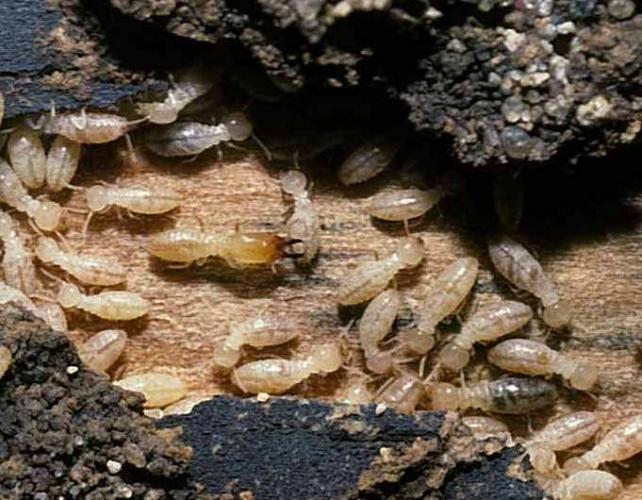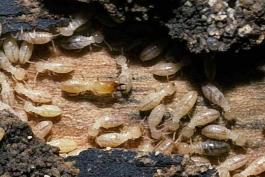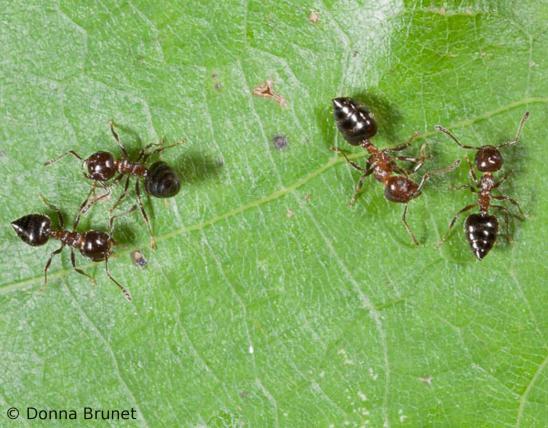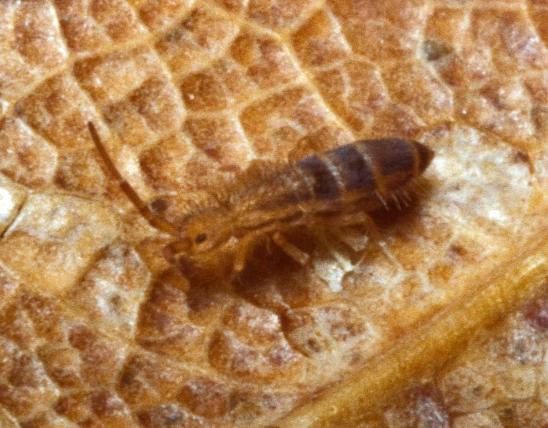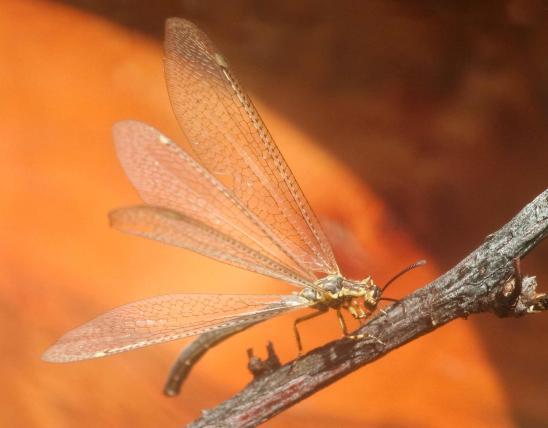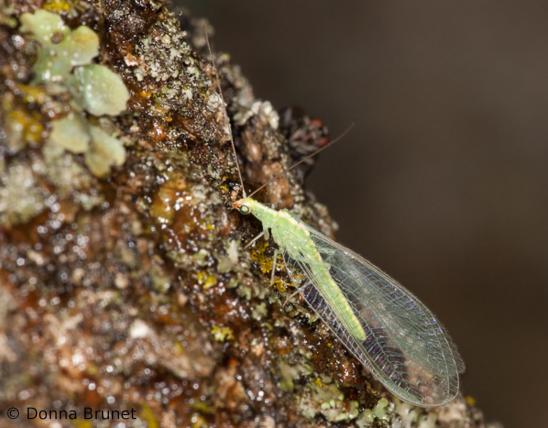
For a long time, termites used to be placed in their order, Isoptera. Recently, however, termites have been added to the cockroach order, Blattodea.
The families of termites, however, are clearly different from the families of typical cockroaches. Termites were folded into the cockroach order based on DNA evidence: They are closely related to one of the families of cockroaches, so all share a common ancestor. In North America, there are five families (about 70 species) of typical cockroaches and four families (about 40 species) of termites.
The various families of termites are grouped together as an epifamily, Termitoidae, which recognizes how distinct they are from the typical cockroaches in the cockroach-termite order.
People often confuse termites with ants. Both are small insects that live in colonies and live on or near the ground, under rocks, wood, and leaf litter. Ants, however, have the middle part of the body narrowed to a relatively tiny stalk between the large head and the large abdomen. Termites have a fairly cylindrical body, only slightly narrowed behind the head. Ants lack a pronotum (a shieldlike plate behind the head, where their shoulders would be), while termites and cockroaches have a pronotum.
Key identifiers:
- Soft-bodied
- Base of abdomen not constricted as it is in ants
- Usually light-colored
- Forewings and hindwings (when present) about equal length, narrow, usually folded down the length of the body, as long as the body or longer
- Antennae short and thin
Four families of termites occur in the continental United States:
- Drywood termites (family Kalotermitidae) typically house their entire colonies within wood, so there is little indication of their presence. They are one of the groups responsible for severe damage to wooden structures. People usually only discover them when they notice piles of sawdust-like frass, or fecal pellets, lying on a surface. The workers open a hole, push the frass out of it, then close up the hole.
- Subterranean termites (family Rhinotermitidae) are soil-nesters. They also can cause extensive damage to wooden structures. People usually discover them when they notice skinny mud tubes hanging from a ceiling, between walls, or arising from the foundation.
- Higher termites (family Termitidae) are the largest family of termites globally and include the African and Australian species that build huge castle-like mounds. American species do not build such mounds, however. Termites in this family lack the symbiotic organisms in their guts that allow other termites to digest wood, so they eat plants, decaying plants, and dung instead of wood. In North America, these termites occur in the desert southwest. Apparently they do not live in Missouri.
- Dampwood or rottonwood termites (family Archotermopsidae) are an ancestral group of termites not found in Missouri. Three species are found in western North America.
Adult length (not counting appendages): less than ½ inch (varies with species and caste).
Statewide. Different species may have different distributions.
Habitat and Conservation
Termites live in colonies on or below the ground or in wood.
Food
Termites are famous for being able to eat wood, that is, plant material with cellulose. Cellulose is indigestible to most animals, but most termites have symbiotic microscopic organisms in their digestive tracts that help them digest cellulose.
One family of termites has lost the ability to host the symbiotic, cellulose-digesting organisms, so this family of termites eat lichens, leaf litter, grass, fungi, dung, and other materials.
Status
Termites are famous for being able to eat wood. That can be bad news for homes and other wooden structures, but it's good news when a fallen tree is converted into nutrient-rich soil.
Life Cycle
The termite life cycle is complicated. A colony includes at least four so-called castes:
- reproductives (individuals, called a queen and king, that mate and lay eggs)
- supplementary or secondary reproductives (smaller than the primary reproductives)
- workers (which collect food, build and repair the nest, feed all the rest, care for the young, and so on)
- soldiers (specialized for colony defense, they have huge, pinching mandibles and in some species can squirt defensive chemicals at enemies)
Annually, a colony releases a swarm of potential new queens and kings from the nest. These are called alates, and these are what most people see: a swarm of winged, darker-colored termites that might be confused with a swarm of winged ants. Note that termites' wings are the same length, and termites lack the skinny stalk between head and abdomen.
As the alates swarm, the kings and queens mate and join together to possibly start a new colony. They remove their wings after mating. The queens are large creatures that amount to egg-production machines. They live for a long time, laying all the eggs for the colony. Workers are pale, lack compound eyes, and sterile; they cannot reproduce on their own.
As with ants, a case can be made for calling termite colonies superorganisms, since individual termites cannot survive for long by themselves, and survival and reproduction, by the individuals capable of mating and laying eggs, cannot occur without all the castes present.
Human Connections
Termites are notorious for their role in destroying wooden structures: homes, fenceposts, furniture, even pianos. They hollow out wood from the inside, often with little outside indication of what they're doing. The wood eventually collapses. Only a fraction of North American termite species are responsible for this damage. The rest are important decomposers that enrich the soil.
If you think you have a termite problem or want to prevent termite problems, consult a licensed pest exterminator.
Globally, termites have been used as food and fodder, medicine, and more.
Architects have been inspired by the impressive, tall termite mounds in the Southern Hemisphere. For example, a commercial building called the Eastgate Centre in Zimbabwe utilizes a clever passive-cooling and ventilating architecture similar to that of termite nests. Side vents, and a solar chimney, keep cool air flowing naturally through the building.
Ecosystem Connections
Only a fraction of North American termite species are responsible for damage to human structures. The majority are important in nature as decomposers. Without termites and other animals such as ants, springtails, and beetle larvae, plus fungi and bacteria, our woods would be filled with tree debris: fallen logs, branches, sticks, and twigs. Instead, dead trees are converted into a form that young trees and other plants can use for nourishment.
Termites, as prey, help to feed a variety of animals, including spiders, fishes, amphibians, reptiles, mammals, and birds. Especially when alates swarm out of the nest, birds and other predators may have a feeding bonanza.
In some parts of the world, termites and their huge mounds are important for other species, which may live symbiotically or parasitically with them in their mounds.
Termites apparently arose from a cockroach ancestor during the Jurassic or Triassic periods. Although in many ways they seem primitive, their extremely complex social organization, adaptive behaviors, and nest-building put them in a category by themselves.
